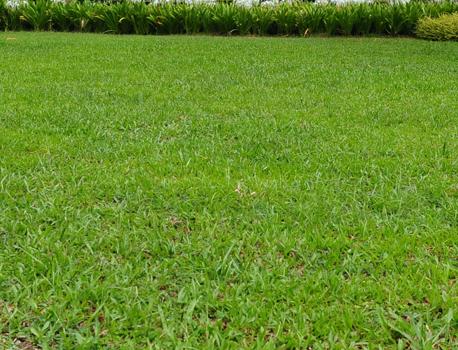Lawn Aeration: Give Your Grass a Breath of Fresh Air

Lawn aeration brings oxygen, water, and nutrients directly to grass roots, which helps make your lawn green and lush. It's a critical part of spring and fall lawn care and gives roots the vital boost they need.
Here's how:
Lawn Aeration Basics
Lawn aeration pulls 2- to 8-inch soil "plugs" out of the ground, leaving holes that allow water, air, and nutrients to reach grass roots, and lets new seed germinate in a cool, moist environment. Hard clay soils need to be aerated more often than sandy soil. A soil test will tell you what type of soil you have.
John Dillon, who directs lawn care at New York City's Central Park, says aeration helps lawns by:
-
Allowing oxygen to reach the root zone, which invigorates lawns
-
Relieving compaction by allowing established grass and seed to spread into plug holes
-
Controlling thatch buildup
-
Reducing water runoff
Aeration Tools
You can aerate by hand with an aerating tool ($20), which looks like a pitchfork with two hollow tines. Step on the tool's bridge and drive the hollow tines into the earth. It's slow-going, but good for spot aerating small patches of lawn.
You also can buy an aeration attachment ($60) for your garden tiller, but the tool slices the lawn and doesn't actually remove plugs.
Most lawn aeration is done with a self-propelled machine known as a core aerator. About the size of a large lawn mower, a core aerator has hollow tines or spoons that rotate on a drum, removing soil plugs as you guide it from behind. This tool is available at most garden or rental centers for $15 to $25 per hour. Plan two to four hours to aerate an average quarter-acre suburban lot.
Timing is Everything
Aerate after the first frost has killed weeds, but before the ground has become too hard. It's a good idea to spread grass seed after you aerate, so make sure you're still able to water your lawn for two weeks after you aerate, which will help the seed to germinate.
Adria Bordas, a Fairfax County Virginia extension agent, says lawns with a lot of foot traffic should be aerated twice a year -- March through April, and mid-August through October.
Lisa Kaplan Gordon is an award-winning, Pulitzer Prize-nominated writer who conributes to real estate and home improvement sites. In her spare time (yeah, right), she gardens, manages three dogs, and plots to get her 21-year-old out of her basement.


